Introduction
Carol, a flight instructor, has planned the first tailwheel flight with Jacob, her learner pilot. She begins the preflight briefing with an explanation of the tendency of tailwheel aircraft to yaw in normal takeoff. This yawing tendency gives the illusion that the tailwheel aircraft is unstable during the takeoff. Since this yawing tendency occurs on every takeoff, it is predictable and the pilot is able to compensate for it. Carol then discusses the precession, which causes the noticeable yaw when the tail is raised from a threepoint attitude to a level flight attitude. This change of attitude tilts the horizontal axis of the propeller, and the resulting precession produces a forward force on the right side (90° ahead in the direction of rotation), yawing the aircraft’s nose to the left. To demonstrate the yawing tendency, she places a model aircraft prop under a desk lamp. [Figure 4-1] By moving the prop, the shadow it casts illustrates the pitch change of the propeller when the aircraft is on its tailwheel and when the aircraft is raised to a level flight attitude.
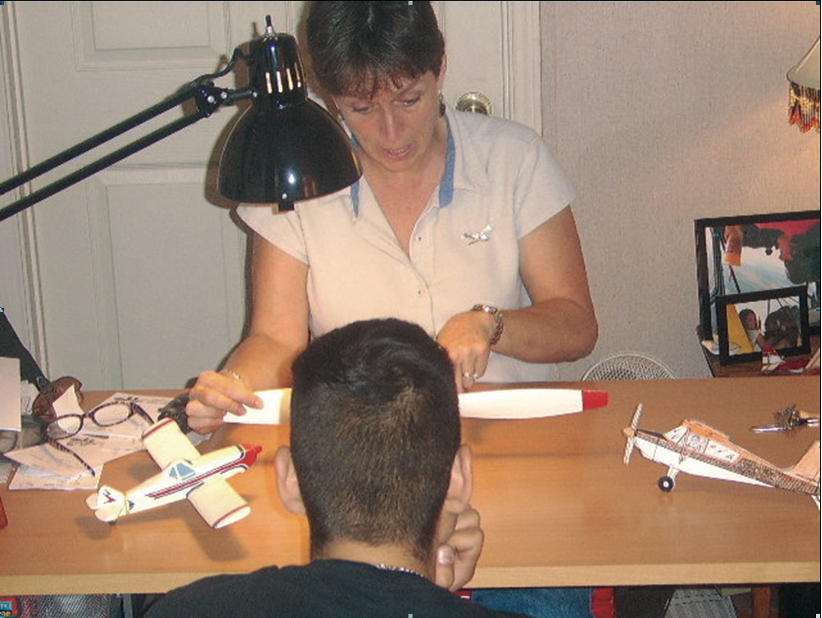
Figure 4-1. An aviation instructor communicates with her learner using model airplanes to ensure the learner’s understanding of the principles discussed.
Effective communication is an essential element of instruction. An aviation instructor may possess a high level of technical knowledge, but he or she needs to cultivate the ability to communicate effectively in order to share this knowledge with learners. Although communication is a complex process, aviation instructors need to develop a comfortable style of communication that meets the goal of passing on desired information to learners.
Communicating effectively is based on similarity of the idea transmitted by the source and received by the receiver. Similarly, as the source, instructors have communicated effectively if the learner has understood the idea/concept/action transmitted in the manner in which it was intended to be understood.
It is also important to recognize that communication is a two-way process. Each instructor and learner may have a unique communication style, and bridging the gap between these styles is an important aspect of providing instruction. The elements of effective communication, the barriers to communication, and the development of communication skills are discussed in this chapter.
Basic Elements of Communication
Communication takes place when one person transmits ideas or feelings to another person or group of people. The effectiveness of the communication is measured by the similarity between the idea transmitted and the idea received. The process of communication is composed of three elements:
⦁ Source (sender, speaker, writer, encoder, transmitter, or instructor)
⦁ Symbols used in composing and transmitting the message (words or signs [model prop/desk lamp in Figure 4-1])
⦁ Receiver (listener, reader, decoder, or learner)
The three elements are dynamically interrelated since each element is dependent on the others for effective communication to take place. The relationship between the source and the receiver is also dynamic and depends on the two-way flow of symbols between the source and the receiver. The source depends on feedback from the receiver to properly tailor the communication to the situation. The source also provides feedback to the receiver to reinforce the desired receiver responses.
Source
As indicated, the source in communication is the sender, speaker, writer, encoder, transmitter, or instructor. The effectiveness of persons acting in the role of communicators is related to at least three basic factors.
First, their ability to select and use language is essential for transmitting symbols that are meaningful to listeners and readers. It is the responsibility of the speaker or writer, as the source of communication, to realize that the effectiveness of the communication is dependent on the receiver’s understanding of the symbols or words being used. For example, if an aviation maintenance instructor were to use aviation acronyms like ADs, TCDS or STCs or a flight instructor were to use aviation acronyms like ILS, TCAS, or TAWS with a new maintenance learner or learner pilot respectively, effective communication would be difficult if not impossible.
Second, communicators consciously or unconsciously reveal information about themselves. This includes their self-image, their view of the ideas being communicated, and their feelings toward the receivers. Communicators need to be confident; they should illustrate that the message is important, and that the receivers have a need to know the ideas presented.
Third, successful communicators speak or write from accurate, up-to-date, and stimulating material. Communicators should convey the most current and interesting information available. Doing so holds the receiver’s interest. Out-of-date information causes the instructor to lose credibility, and uninteresting information may cause the receiver’s attention to be lost.
Symbols
At its basic level, all communication is achieved through symbols, which are simple oral, visual, or tactile codes. The words in the vocabulary constitute a basic code. Common gestures and facial expressions form another, but codes and symbols alone do not communicate complex concepts. These are communicated only when symbols are combined in meaningful wholes as ideas, sentences, paragraphs, speeches, or chapters that mean something to the receiver. When symbols are combined into these units, each portion becomes important to effective communication.
On a higher level, communication with symbols relies upon different perceptions, sometimes referred to as channels. While many theories have been proposed, one popular theory indicates that the symbols are perceived through one of three sensory channels: visual, auditory, or kinesthetic. As discussed in Chapter 3, visual learners rely on seeing, auditory learners prefer listening and speaking, while kinesthetic learners process and store information through physical experience such as touching, manipulating, using, or doing.
The instructor may gain and retain the learner’s attention by using a variety of channels. As an example, instead of telling a learner to adjust the trim, the instructor can move the trim wheel while the learner tries to maintain a given aircraft attitude. The learner experiences by feel that the trim wheel affects the amount of control pressure needed to maintain the attitude. At the same time, the instructor can explain to the learner that what is felt is forward or back pressure on the controls. After that, the learner begins to understand the correct meaning of control pressure and trim, and when told to adjust the trim to relieve control pressure, the learner responds in the manner desired by the instructor. Instructors commonly rely on the hearing and seeing channels of communication. However, using all channels may improve the learning process. For teaching motor skills, the sense of touch, or kinesthetic learning, is added as the learner practices the skill.
An instructor should constantly monitor feedback from the learner in order to identify misunderstandings and tailor the presentation of information. Periodically asking the learner to explain his or her understanding of new information while it is being conveyed is one way to obtain such feedback. The instructor may then modify the symbols he or she uses, as appropriate, to optimize communication. [Figure 4-2] In addition to feedback received by the instructor, learners also need feedback from the instructor on how they are doing. The feedback not only informs the learners of their performance, but can also serve as a valuable source of motivation. An instructor’s praise builds the learner’s self-confidence and reinforces favorable behavior. On the other hand, negative feedback should be used carefully. To avoid embarrassing a learner, use negative feedback only in private. This information should be delivered as a description of actual performance and given in a nonjudgmental manner.
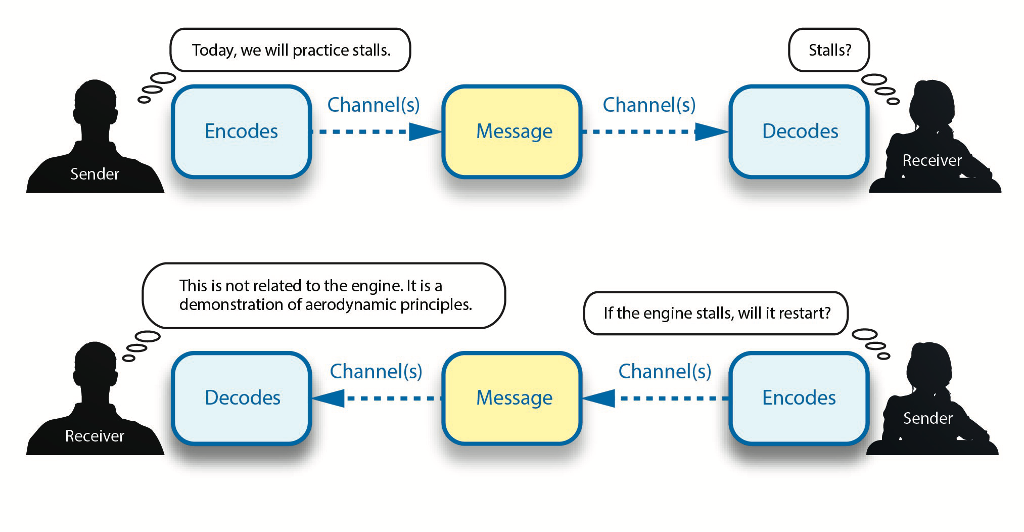
Figure 4-2. The instructor realizes from the response of the learner that “stall” has been interpreted by the learner to have something to do with the engine quitting. Recognizing that the learner has misunderstood, the instructor is able to clarify the information and help the learner to obtain the desired outcome.
For example, it would be appropriate to tell a maintenance learner that a safety wire installation is not satisfactory. To refer to the work as careless would not be good and could do harm to the learner’s feeling of self-worth.
The parts of the total idea should be analyzed to determine which are most suited to starting or ending the communication, and which are best for the purpose of explaining, clarifying, or emphasizing. All of these functions are required for effective transmission of ideas. The process finally culminates in the determination of the medium best suited for their transmission.
Receiver
The receiver is the listener, reader, decoder, or learner—the individual or individuals to whom the message is directed. Effective communicators should always keep in mind that communication succeeds only in relation to the reaction of their receivers. When the receiver reacts with understanding and changes his or her behavior according to the intent of the source, effective communication has taken place.
In order to understand the process of communication, three characteristics of receivers need to be understood: abilities, attitudes, and experiences.
First, an instructor needs to determine the abilities of the learner in order to properly communicate. One factor that can have an effect on learner ability is his or her background. For example, consider how familiar the learner may be with aviation. The familiarity may range from having grown up around aviation to absolutely no familiarity at all. Some learners may have highly developed motor skills, and others have not had opportunities to develop these skills. These factors should be taken into consideration when presenting information to a learner.
The instructor should also understand that the viewpoint and background of people may vary because of cultural differences. The instructor should be aware of possible differences, but not overreact or make assumptions because of these differences. For example, just because a learner is a college graduate does not guarantee rapid advancement in aviation training. A learner’s education certainly affects the instructor’s style of presentation, but that style should be based on the evaluation of the learner’s knowledge of the aviation subject being taught.
Second, the attitudes learners exhibit may indicate resistance, willingness, or passive neutrality. To gain and hold learner attention, attitudes should be molded into forms that promote reception of information. A varied communicative approach works best in reaching most learners since they have different attitudes.
Third, instructors in aviation enjoy a unique advantage over other teachers, in that an aviation learner is usually an adult willing to expend time and money to further knowledge. The typical aviation learner exhibits a much more developed sense of motivation and self-concept than a typical school learner. Additionally, he or she usually comes into the learning environment with a significant amount of prior knowledge, many life experiences, and a number of decision-making skills. The learner’s knowledge, abilities, and attitudes affect the instructor’s communication strategy.
Barriers to Effective Communication
It is essential to understand the dynamics of communication, but the instructor also needs to be aware of several barriers to communication that can inhibit learning. The nature of language and the way it is used often lead to misunderstandings. These misunderstandings can be identified by four barriers to effective communication: lack of common experience, confusion between the symbol and the symbolized object, overuse of abstractions, and external factors. [Figure 4-3]
Lack of Common Experience
Lack of common experience between the communicator (instructor) and the receiver (learner) is probably the greatest single barrier to effective communication. Communication can be effective only to the extent that the experiences (physical, mental, and emotional) of the participants are similar.
Many people seem to believe that words transport meanings from speaker to listener in the same way that a truck carries bricks from one location to another. Words, however, rarely carry precisely the same meaning from the mind of the instructor to the mind of the learner. In fact, words, in themselves, do not transfer meanings at all. Whether spoken or written, words are merely stimuli used to arouse a response in the learner.
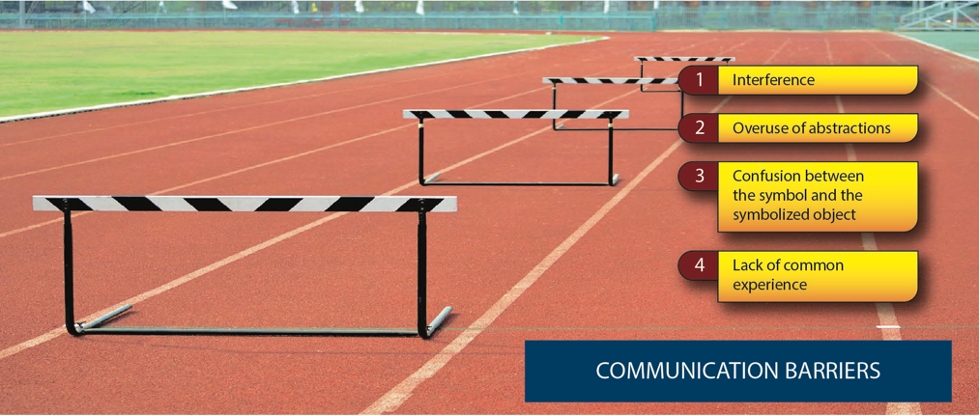
Figure 4-3. Misunderstandings stem primarily from four barriers to effective communication.
The learner’s past experience with the words and things to which they refer determines how the learner responds to what the instructor says. An instructor’s words cannot communicate the desired meaning to another person unless the learner has had some experience with the objects or concepts to which these words refer. Since it is the learners’ experience that forms vocabulary, it is also essential that instructors speak the same language as the learners. When the instructor’s terminology is necessary to convey the idea, some time needs to be spent making certain the learners understand that terminology.
For example, a maintenance instructor tells a learner to time the magnetos. A learner new to the maintenance field might think a stopwatch or clock would be necessary to do the requested task. Instruction would be necessary for the learner to understand that the procedure has nothing to do with the usual concept of time.
The English language abounds in words that mean different things to different people. To a farmer, the word “tractor” means the machine that pulls the implements to cultivate the soil; to a trucker, it is the vehicle used to pull a semitrailer; in aviation, a tractor propeller is the opposite of a pusher propeller. Each technical field has its own vocabulary. Technical words might mean something entirely different to a person outside that field, or perhaps mean nothing at all. In order for communication to be effective, the learners’ understanding of the meaning of the words needs to be the same as the instructor’s understanding.
When either the instructor, the learner, or both utilize English as a second language, the instructor notes whether this creates a significant barrier to communication. Except in cases of special accommodation for a medical disability, any learner seeking a pilot certificate or a maintenance learner seeking to become an AMT with operating privileges in the United States demonstrates the ability to communicate in English before certification or exercise of privilege. If reasonable doubt exists as to the ability of an aviation learner to communicate in English at an appropriate level, the instructor should refer to Advisory Circular (AC) 60-28, FAA English Language Standard for an FAA Certificate Issued Under 14 CFR Parts 61, 63, 65, and 107, for further guidance.
Confusion Between the Symbol and the Symbolized Object
Confusion between the symbol and the symbolized object results when a word is confused with what it is meant to represent. Although it is obvious that words and the connotations they carry can be different, people sometimes fail to make the distinction. An aviation maintenance technician (AMT) might be introduced as a mechanic. To many people, the term mechanic conjures up images of a person laboring over an automobile. Being referred to as an aircraft mechanic might be an improvement in some people’s minds, but neither really portrays the training and skill of the AMT. Words and symbols do not always represent the same thing to every person. To communicate effectively, speakers and writers should account for possible misinterpretation. Words and symbols can then be chosen to represent what the speaker or writer intends.
Overuse of Abstractions
Abstractions are words that are general rather than specific. Concrete words or terms refer to objects people can relate directly to their own experiences. These words or terms specify an idea that can be perceived or a thing that can be visualized. Abstract words, on the other hand, stand for ideas that cannot be directly experienced, things that do not call forth mental images in the minds of the learners. The word aircraft is an abstract word. It does not call to mind a specific aircraft. One learner may visualize an airplane, while another might visualize a helicopter, and still another learner might visualize an airship. [Figure 4-4] Although the word airplane is more specific, various learners might envision anything from a Boeing 777 to a Piper Cub.
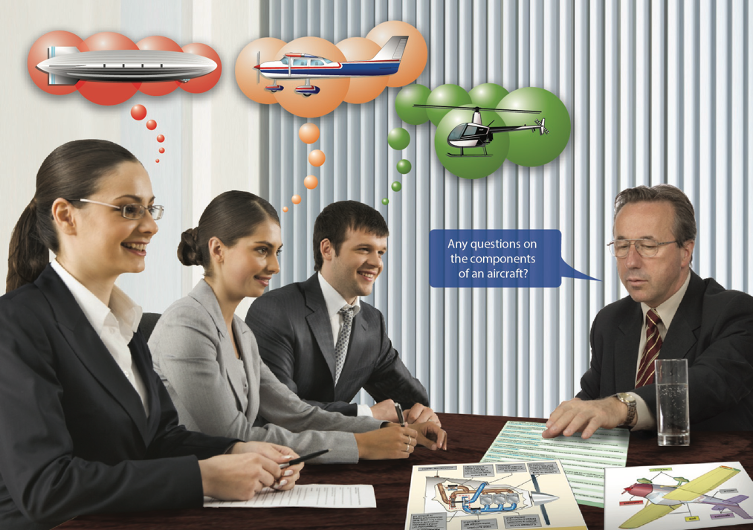
Figure 4-4. Overuse of abstract terms can interfere with effective communication.
Aircraft engines represent another example of abstractions. When an instructor refers to aircraft engines in general, some learners might think of jet engines, while others would think of reciprocating engines. Even reciprocating engine is too abstract since it could be a radial engine, an inline engine, a V-type engine, or an opposed type engine. Use of the technical language of engines, as in Lycoming IO-360, would narrow the engine type, but would only be understood by learners who understand the terminology particular to aircraft engines.
Abstractions should be avoided in most cases, but there are times when abstractions are necessary and useful. Aerodynamics is applicable to all aircraft and is an example of an abstraction that can lead to understanding aircraft flight characteristics. The danger of abstractions is that they do not evoke the same specific items of experience in the minds of the learners that the instructor intends. When such terms are used, they should be linked with specific experiences through examples and illustrations.
For instance, when an approach to landing is going badly, telling a learner to take appropriate measures might not result in the desired action. It would be better to tell the learner to conduct a go-around since this is an action that has the same meaning. When maintenance learners are being taught to torque the bolts on an engine, it would be better to tell them to torque the bolts in accordance with the maintenance manual for that engine rather than simply to torque the bolts to the proper values. Whenever possible, the level of abstraction should be reduced by using concrete, specific terms. This better defines and gains control of images produced in the minds of the learners.
External Factors Some barriers to effective communication can be controlled by the instructor. Others are external factors outside of the instructor’s control that prevent a process or activity from being carried out properly. These factors may include physiological, environmental, and psychological elements. To communicate effectively, the instructor should consider the effects of these factors and mitigate them where possible.
Physiological external factors include biological conditions such as hearing loss, injury, physical illness, or other congenital condition. These physiological factors may cause learner discomfort and inhibit communication. The instructor should adapt the presentation to allow the learner to feel better about the situation and be more receptive to new ideas. Adaptation could be as simple as putting off a lesson until the learner is over an illness. Another accommodation could be the use of a seat cushion to allow a learner to sit properly in the airplane.
With the advent of more sophisticated technology, multitasking has become a form of physiological external factors. The term multitask comes from a computer’s ability to simultaneously execute more than one program or task at a time. Although it now refers to humans performing multiple tasks simultaneously, humans are not computers. Research shows that although human comprehension can handle two simple, low-level cognitive tasks at once, a higher level cognitive task takes brain function and concentration to perform optimally. Adding even a simple activity diminishes the comprehension and recall of both. Research shows that multitasking is just a series of constant micro-interruptions and “stop-go” decisions, all of which tend to reduce mental and motor performance.
Environmental external factors are caused by external physical conditions. One example of this is the noise level found in many light aircraft. Noise not only impairs the communication process, but also can result in long-term damage to hearing. One solution to this problem is the use of headphones and an intercom system. If an intercom system is not available, a good solution is the use of earplugs. It has been shown that in addition to protecting hearing, use of earplugs actually clarifies speaker output. Vibration is another possible example of environmental external factors, applicable to rotary wing aircraft.
A psychological external factor is a product of how the instructor and learner feel at the time the communication process is occurring. If either instructor or learner is not committed to the communication process, communication is impaired. Fear of the situation or mistrust between the instructor and learner disrupts communication and severely inhibits the flow of information.
Interference
Interference occurs when the message gets disrupted, truncated, or added to somewhere in the communication sequence. While the instructor or learner may believe that an intact message has been sent and received, the assumption may be inaccurate. Noise and other factors may distort the message. Psychological factors also interfere with the receipt of a message. Instructors and learners confirm the message and its proper communication when observing the effect of a message. Additional feedback and confirmation reduce potential harmful effects from interference.
Developing Communication Skills
Communication skills need to be developed; they do not occur automatically. The ability to effectively communicate stems from experience. The experience of instructional communication begins with role playing during training to be an instructor, continues during the actual instruction, and is enhanced by additional training.
Role Playing
Role playing is a method of learning in which learners perform a particular role. In role playing, the learner is provided with a general description of a situation and then applies a new skill or knowledge to perform the role. Experience in instructional communication comes from actually doing it and is learned in the beginning by role playing during the instructor’s initial training. For example, a flight instructor applicant can fly with a flight instructor who assumes the role of a learner pilot. In this role, the flight instructor can duplicate known learner responses and then critique the applicant’s role as instructor. A mentor or supervisor can play the learner AMT for a maintenance instructor applicant.
It is essential for the flight instructor to develop good ground instruction skills, as well as flight instruction skills to prepare learners for what is to transpire in the air. Likewise, the maintenance instructor develops classroom teaching skills to prepare the maintenance learner for practical, hands-on tasks. In both cases, effective communication is necessary to reinforce the skills that have been attempted and to assess or critique the results. This development continues as an instructor progresses in experience. What worked early on might be refined or replaced by some other technique as the instructor gains more experience.
A new instructor is more likely to find a comfortable style of communication in an environment that is not threatening. For a prospective maintenance instructor, this might take the form of conducting a class on welding while under the supervision of a maintenance supervisor; the flight instructor applicant usually flies with a flight instructor who role plays as the learner.
Current Federal Aviation Administration (FAA) training emphasis has moved from a maneuvers-based training standard to what is called scenario-based training (SBT). SBT is a highly effective approach that allows learners to understand, then apply their knowledge as they participate in realistic scenarios. This method of instruction and learning allows learners to move from theory to practical application of skills during their training. Instructor applicants, flight or maintenance, need to think in terms of SBT while they are learners. Not only does it prepare them to react appropriately in the situations they encounter in the workplace, it also helps them as instructors when they are responsible for creating scenarios for their learners.
For example, James (the flight instructor applicant) designs a scenario in which Ray (the flight instructor playing the role of learner) is performing stalls to Airm an Certification Standards (ACS). James briefs Ray on the maneuver before the flight, demonstrates the stall, and then talks Ray through the maneuver. Ray pretends to be an anxious learner pilot, replicating reactions he himself has experienced with flight learners. After the flight, James critiques their instruction period. As increased emphasis is placed on SBT, there will be a corresponding increase in the importance of role playing.
Instructional Communication
Instruction has taken place when the instructor explains a particular procedure and subsequently determines that the learner exhibits the desired response. Even so, the instructor can improve communication by adhering to techniques of good communication.
One of the basic principles used in public speaking courses is to encourage participants to make presentations about something they understand. It would not be good if an instructor without a maintenance background tried to teach a course for aviation maintenance. Instructors perform better when speaking of something they know very well and for which they have a high level of confidence.
The instructor should not be afraid to use examples of past experiences to illustrate particular points. When teaching the procedures to be used for transitioning from instrument meteorological conditions (IMC) to visual cues during an approach, it would be helpful to be able to tell the learner about encountering these same conditions. An instructor’s personal experiences make instruction more valuable than reading the same information in a textbook. The instructor should be cautioned, however, to exercise restraint with this technique of illustration, as these types of discussions frequently degrade into a “war story” or “there I was” discussion.
The instructor needs some way of determining results, and the method used should be related to the expected outcome. In the case of flight training, the instructor can judge the actual performance of a maneuver. For a maintenance learner, the instructor can judge the level of accomplishment of a maintenance procedure. In both cases, the instructor determines whether the learner has actually received and retained the knowledge or if acceptable performance was a one-time event.
The aviation learner should know how and why something should be done. For example, a maintenance learner may know how to tighten a particular fastener to a specified torque, but it is more important to know that the security and integrity of any fastener depends on proper torque. In this way, the learner would be more likely to torque all fasteners properly in the future. For a flight learner, simply knowing the different airspeeds for takeoffs and landings is not enough. It is essential to know the reasons for different airspeeds in specific situations to fully understand the importance of proper airspeed control. Normally, the instructor determines the level of understanding by use of some type of evaluation. See Chapter 6, Assessment, for more information.
Listening
Instructors should know something about their learners in order to communicate effectively. As discussed earlier, an instructor needs to determine the abilities of the learners and properly communicate, and one way of becoming better acquainted with learners is to be a good listener. Good instructors work to master listening ability and frequently self-evaluate in this area. Instructors can use a number of techniques to become better at listening. [Figure 4-5]
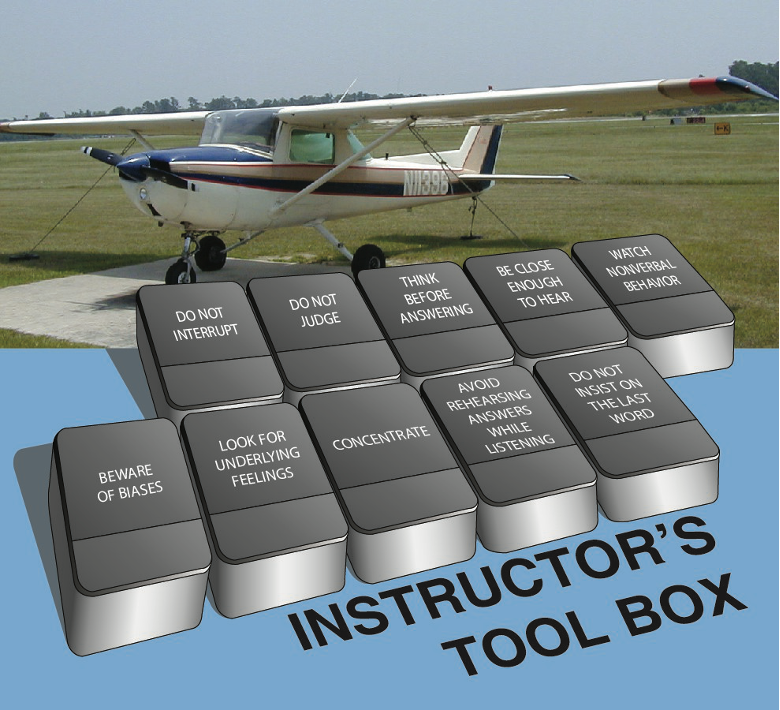
Figure 4-5. Instructors can use a number of tools to become better at listening.
Just as it is important for instructors to want to listen in order to be effective listeners, it is necessary for learners to want to listen. Wanting to listen is just one of several techniques that allow a learner to listen effectively. Instructors can improve the percentage of information transfer by teaching learners how to listen. [Figure 4-6]
Listening is more than hearing. Most instructors are familiar with the concept that listening is “hearing with comprehension.” When the learner hears something being communicated, he or she may or may not comprehend what is being transmitted. On the other hand, when the learner truly hears the communication, he or she then interprets the communication based on their knowledge to that point, processes the information to a level of understanding, and attempts to make a correlation of that communicated information to the task at hand. The increased level of motivation of typical flight and aviation maintenance learners makes this process much easier.
Remind learners that certain emotions interfere with how they listen. For example, an instrument learner pilot anticipating drastic changes in requested routing becomes anxious. In this frame of mind, it is very difficult for the learner to listen and process the new route. If a learner who is terrified of the prospect of spins attempts to listen to a lesson on spins, the emotions felt might overwhelm the attempt to listen. This requires a means to allay the anxiety and fear. If the instructor or learner knows that certain areas arouse emotion, they may consider additional conditioning that prepares the learner to listen.
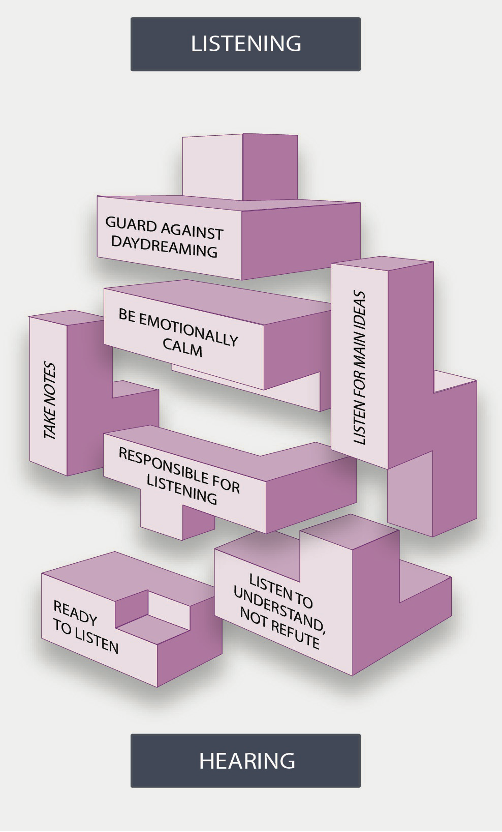
Figure 4-6. Learners can improve their listening skills by applying the steps to effective listening.
Listening for main ideas is another listening technique. Primarily a technique for listening to a lecture or formal lesson presentation, it sometimes applies to hands-on situations as well. People who concentrate on remembering or recording facts might very well miss the message because they have not picked up on the big picture. A listener should always ask, what is the purpose of what I am listening to? By doing this, the listener can relate the words to the overall concept.
The instructor should ensure that the learner is aware of the danger of daydreaming. Most people can listen much faster than even the fastest talker can speak. This leaves room for the mind to get off onto some other subject. The listener who is aware of this problem can concentrate on repeating, paraphrasing, or summarizing the speaker’s words. Doing so uses the extra time to reinforce the speaker’s words, allowing the learner to retain more of the information.
Nobody can remember everything. Note taking allows the learner to use an organized system to reconstruct what was said during the lesson. Every learner has a slightly different system, but no attempt to record the lecture verbatim should be made.
In most cases, a shorthand or abbreviated system of the learner’s choosing should be encouraged. Notetaking is merely a method of allowing the learner to recreate the lecture so that it can be studied. The same notetaking skills can be used outside the classroom any time information needs to be retained. For example, copying an instrument clearance word for word is very difficult. By knowing the format of a typical clearance, learner instrument pilots can develop their own system of abbreviations. This allows them to copy the clearance in a useful form for read back and for flying the clearance. By incorporating all or some of these techniques, learners retain more information. Instructors can vastly improve retention of information by making certain their learners have the best possible listening skills.
Questioning
Good questioning can determine how well the learner understands what is being taught. It also shows the learner that the instructor is paying attention and that the instructor is interested in the learner’s response. An instructor should ask focused, open-ended questions and avoid closed-ended questions.
Focused questions allow the instructor to concentrate on desired areas. An instructor may ask for additional details, examples, and impressions from the learner. This allows the instructor to ask further questions if necessary. The presentation can then be modified to fit the understanding of the learner.
Open-ended questions are designed to encourage full, meaningful answers using the learner’s own knowledge and perceptions while closed-ended questions encourage a short or single-word answer. Open-ended questions, which typically begin with words such as
“why” and “how” tend to be more objective and less leading than closed-ended questions. Often open-ended questions are not technically questions, but statements that implicitly ask for completion. An instructor’s ability to ask open-ended questions is an important skill to develop.
In contrast, closed-ended questions tend to evaluate the learner’s understanding only at the rote level of learning. Closed-ended questions can be answered by “yes” or “no.” When used in a multiple choice scenario, closed-ended questions have a finite set of answers from which the respondent chooses. One of the choices may be “other.” It is a good idea to allow respondents to write in an optional response if they choose “other” because developing the learner response may lead to insights into the learning process.
One benefit of closed-ended questions is that they are relatively easy to standardize and the data gathered easily lend themselves to statistical analysis. The down side to closed-ended questions is that they are more difficult to write than open-ended questions, generally lead the learner towards the desired answer, and may under certain circumstances direct the conversation toward the instructor’s own agenda.
To be effective, questions, regardless of the type, are adapted to the ability, experience, and stage of training of the learner. Effective questions and, therefore, effective communications center on only one idea. A single question should be limited to who, what, when, where, why, or how and not a combination of these. Effective questioning presents a challenge to the learner. Questions of suitable difficulty serve to stimulate learning.
Two ways of confirming that the learner and instructor understand things in the same way are the use of paraphrasing and perception checking. The instructor can use paraphrasing to show what the learner’s statement meant to the instructor. In this way, the learner can then make any corrections or expansions on the statement in order to clarify. Perception checking gets to the feelings of the learner, again by stating what perceptions the instructor has of the behavior that the learner can then clarify as necessary.
Since it is important that the instructor understand as much as possible about the learners, instructors can be much more effective by using improved listening skills and effective questions to help in putting themselves in the place of the learners. Questions should be phrased to focus the learner on the decision-making process and the exercise of good judgment.
Knowledge of the subject material and skill at instructional communication are necessary to be an instructor. Increasing the depth of knowledge in either area makes the instructor more effective.
Instructional Enhancement
An instructor never stops learning. While professional development is discussed in greater detail in Chapter 8, the more an instructor knows about a subject, the better the instructor is at conveying that information. For example, a maintenance instructor teaching basic electricity might be able to teach at a minimally satisfactory level if the instructor had only the same training level as that being taught. If asked a question that exceeded the instructor’s knowledge, the instructor could research the answer and get back to the learner. It would be much better if the instructor, through experience or additional training, was prepared to answer the question initially. Additional knowledge and training would also bolster the instructor’s confidence and give the instructional presentation more depth. Technically qualified instructors, however, consider the level of the learner and present relevant information to enhance understanding or to stimulate the interest of the learner.
Chapter Summary
An awareness of the basic elements of the communicative process (source, symbols, and receiver) is the foundation for a successful communicator. Recognizing the various barriers to communication further enhances the flow of ideas between an instructor and the learner. Instructors develop communications skills in order to convey desired information to the learners. They also recognize that communication is a two-way process. In the end, successful communication has taken place if the desired results have been achieved.





